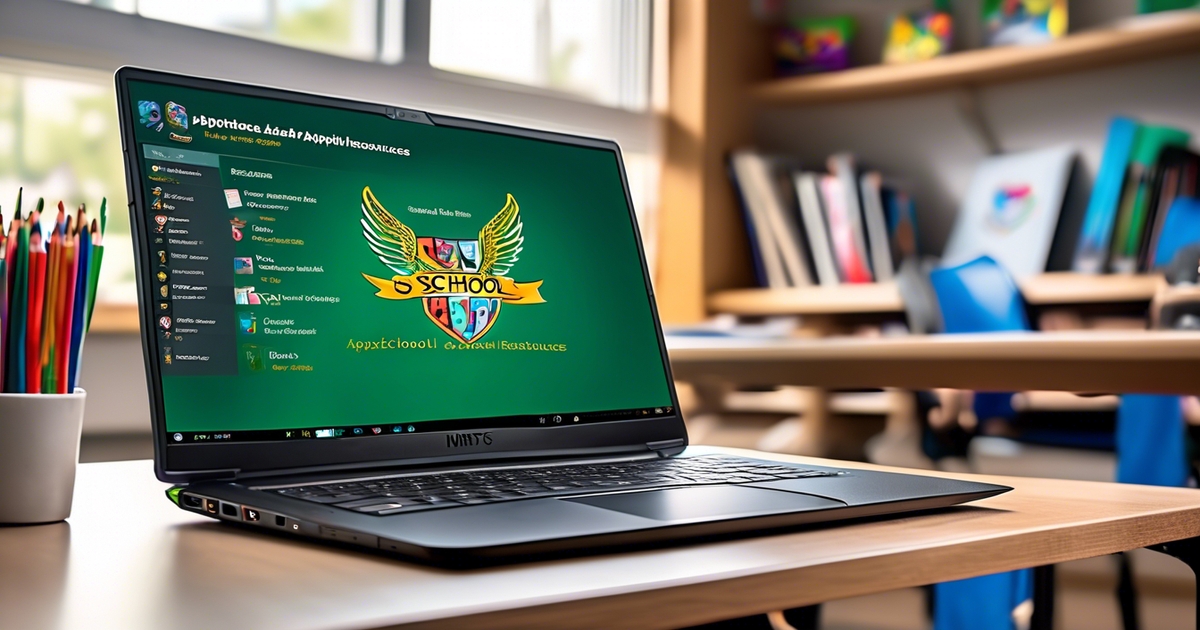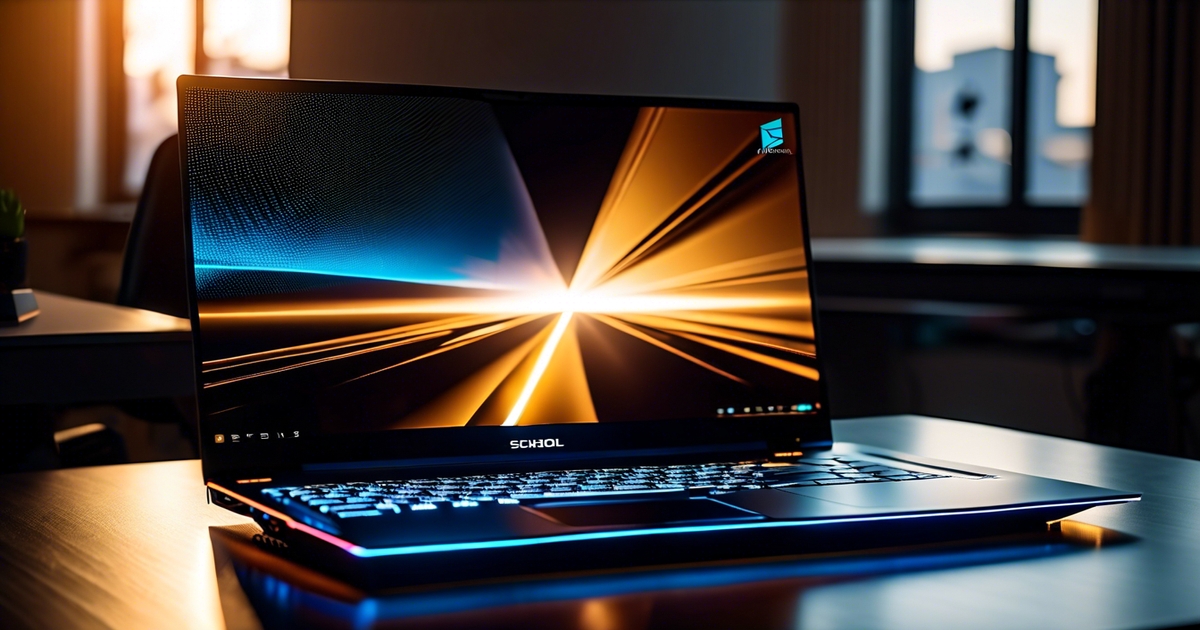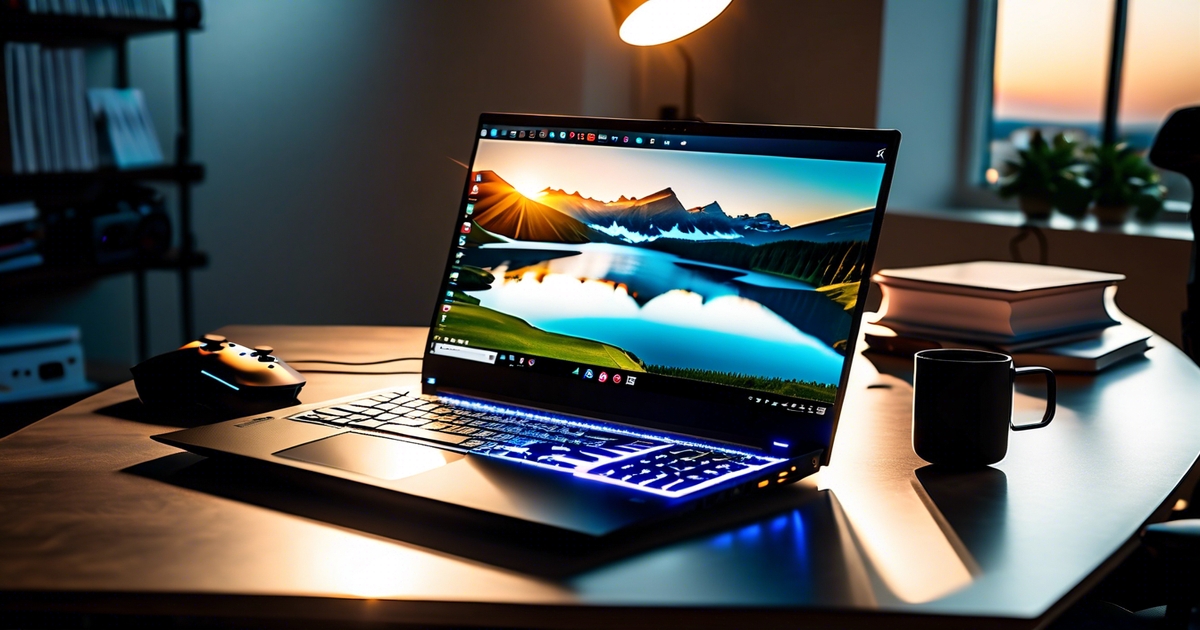Can Gaming Laptops Be Used for School? The Ultimate Answer

- Key Takeaways
- The Versatility of Gaming Laptops for School Use
- Performance Benefits of Gaming Laptops for Educational Tasks
- Potential Drawbacks of Using Gaming Laptops in School
- Ideal Specifications for a School Gaming Laptop
- Balancing Study and Play: Dual-Use Laptops for Students
- Best Practices for Managing a Gaming Laptop in Class
- Final Remarks
- Frequently Asked Questions
Did you know that over 70% of college students use gaming laptops for their academic pursuits? While often associated with leisure, these high-performance machines are increasingly finding their way into classrooms and lecture halls.
With powerful processors, ample storage, and advanced graphics capabilities, gaming laptops offer more than just entertainment value. From productivity to versatility, we’ll delve into how these devices can seamlessly transition from gaming hubs to indispensable tools for schoolwork.
Key Takeaways
- Gaming laptops can be effectively used for school tasks, offering versatility and performance benefits for educational purposes.
- When considering using gaming laptops for school, it’s important to be aware of potential drawbacks such as battery life, weight, and potential distractions.
- Ideal specifications for a school gaming laptop include a balance of processing power, battery life, and portability to support both gaming and academic tasks.
- Students can benefit from dual-use laptops that allow them to balance their study and play needs effectively.
- To manage a gaming laptop in class, students should practice best practices such as optimizing settings for battery life and minimizing distractions during lectures.
- When selecting a gaming laptop for school, it’s essential to consider factors like battery life, portability, and performance to ensure it meets the requirements for educational tasks.
The Versatility of Gaming Laptops for School Use

Seamless Integration
Gaming laptops are not just for gaming; they offer a seamless integration of school work and entertainment. Their powerful processors and high-quality graphics cards enable smooth gameplay while also handling demanding tasks such as video editing, coding, or running engineering software. This means students can easily switch from writing an essay to playing games without any compromise in performance.
Gaming laptops like those from Lenovo are equipped with Windows operating systems that support a wide range of educational software used in classes. The capabilities of these machines extend beyond regular laptops, making them ideal for students pursuing courses that require heavy computing power. For instance, students studying graphic design or engineering can benefit greatly from the enhanced performance these laptops provide.
Design and Portability
The design and build of gaming laptops make them suitable for school use due to their durability and portability. They often feature robust construction to withstand the rigors of daily transportation between home and school. Many models come with slim profiles and lightweight designs, allowing students to carry them around campus without feeling burdened by excessive weight.
Performance Benefits of Gaming Laptops for Educational Tasks

High Processing Power
Gaming laptops offer high processing power that is essential for running demanding educational software. This means you can smoothly run programs like graphic design tools, coding environments, and simulation software without experiencing lags or delays. For instance, when working on complex 3D modeling projects or utilizing virtual reality (VR) applications for educational purposes, the powerful processors in gaming laptops ensure a seamless experience.
The advanced graphics capabilities of gaming laptops greatly enhance multimedia projects and presentations. This allows students to create visually stunning content with intricate details and realistic effects. For example, when creating video presentations or editing high-definition videos for school projects, the graphics capabilities enable smooth rendering and real-time previewing of edits.
Smooth Multitasking
Multitasking becomes much smoother on gaming laptops due to their robust hardware specifications. With ample memory and processing speeds at their disposal, students can seamlessly switch between multiple resource-intensive tasks without encountering slowdowns or system freezes. For instance, you can research online while simultaneously running statistical analysis software and streaming educational videos without any performance issues.
Potential Drawbacks of Using Gaming Laptops in School

Battery Life
Gaming laptops often have shorter battery life compared to traditional laptops. This means that students may need to constantly search for a power outlet during classes, which can be inconvenient. For instance, while a regular laptop might last for 8 hours on a single charge, some gaming laptops may only provide 3-4 hours of battery life.
The high-performance components in gaming laptops such as powerful graphics cards and processors consume more energy. As a result, even if the student is using the laptop for non-gaming tasks like taking notes or writing essays, the battery drains faster due to these hardware specifications.
Portability
Some gaming laptops are heavier than standard school-use laptops. Carrying around a heavier device throughout the day can be tiring and cumbersome for students who need to move between classes frequently. For example, while an average school laptop might weigh around 3-4 pounds (1.36-1.81 kg), certain gaming laptops could weigh closer to 5-7 pounds (2.27-3.18 kg).
The weight difference becomes noticeable when students also carry textbooks, notebooks, and other supplies with them from class to class.
Cost Concerns
Cost is another potential drawback of using gaming laptops for school purposes. While they offer superior performance capabilities suitable for both educational and entertainment needs, their higher price tags might pose financial challenges for some students or their parents.
Moreover, investing in expensive equipment like gaming laptops solely for academic use may not always align with budget constraints or priorities.
Ideal Specifications for a School Gaming Laptop
Optimal RAM and Storage Capacity
Having sufficient RAM and storage capacity is crucial. With multitasking demands from both schoolwork and gaming, a minimum of 8GB RAM is necessary. This ensures smooth operation when running multiple applications simultaneously. Ample storage space allows students to store educational materials, games, and other multimedia content without facing constraints.
Adequate storage capacity also enables the installation of various software required for academic purposes while accommodating large game files. For example, a student might need to run design software or coding programs alongside their favorite games on the same device without compromising performance.
Dedicated Graphics Card
A dedicated GPU, such as an NVIDIA GeForce GTX series, is essential for seamless multitasking between school-related tasks and gaming activities. The dedicated graphics card ensures that high-quality visuals are displayed during gameplay without sacrificing the laptop’s ability to handle graphic-intensive academic tasks.
For instance, engineering students can utilize specialized software with complex visualizations while still enjoying immersive gaming experiences during leisure time. The dedicated GPU guarantees optimal performance in rendering detailed designs or simulations along with providing an enjoyable gaming experience on the same device.
Long Battery Life and Lightweight Design
In addition to robust hardware specifications, long battery life and a lightweight design are advantageous features for students using gaming laptops at school. A prolonged battery lifespan allows uninterrupted use throughout the day without constantly seeking power sources between classes or study sessions.
Meanwhile, a lightweight design enhances portability without compromising powerful hardware capabilities. Students can easily transport their devices between classes or while traveling back home without feeling encumbered by heavy equipment.
Balancing Study and Play: Dual-Use Laptops for Students
Balancing Study and Play
Setting boundaries and managing time are crucial. It’s essential to strike a balance between gaming and studying. Utilizing productivity tools alongside gaming helps maintain this equilibrium. For example, students can use productivity software such as Microsoft Office or Google Workspace for their academic tasks while enjoying occasional gaming sessions.
Incorporating study breaks during gaming sessions is also important. Taking short breaks to play games can actually promote efficiency when returning to study tasks. However, it’s vital that these breaks don’t turn into extended periods of gameplay that disrupt the study schedule.
Efficient Usage of Resources
Gaming laptops often come with powerful hardware components designed to handle high-performance games. These same components can be leveraged effectively for demanding academic tasks, such as graphic design projects or computer programming assignments.
Moreover, many modern gaming laptops feature lightweight designs and long battery life, making them suitable for portability and extended usage throughout the school day without needing frequent recharging.
Best Practices for Managing a Gaming Laptop in Class
Muting Sound and Adjusting Display Settings
When using a gaming laptop for school, it’s crucial to mute the sound to prevent disruptions during class. Adjusting the display settings to ensure that the screen brightness is appropriate can help minimize distractions for both you and your classmates. By doing so, you can maintain focus on educational activities without causing disturbances.
Using accessories like a wireless mouse or headphones can greatly optimize your learning environment when utilizing a gaming laptop in class. A wireless mouse allows for smoother navigation without the need for an additional surface, while headphones enable private listening without disturbing others nearby. These accessories not only enhance your personal experience but also contribute to creating a more conducive atmosphere for everyone in the classroom.
Being Mindful of Others’ Space
Given that gaming laptops are often larger than standard devices, it’s essential to be mindful of others’ space when using them in shared areas such as classrooms or study halls. Ensuring that you have adequate room and aren’t encroaching on neighboring students’ workspaces demonstrates respect and consideration within an academic setting.
Final Remarks
So, can gaming laptops be used for school? Absolutely! They offer exceptional performance and versatility, making them ideal for educational tasks while still providing an immersive gaming experience. However, it’s crucial to strike a balance between study and play, and to manage the laptop responsibly in class. When choosing a school gaming laptop, prioritize specifications that cater to both academic and gaming needs. With the right approach, a gaming laptop can be a valuable tool for students in 2023.
Now that you’ve explored the potential of using gaming laptops for school, it’s time to take action. Consider your specific needs and explore the top picks for school-friendly gaming laptops. Find the perfect balance between work and play, and make the most of your educational journey with a laptop that supports your diverse interests.
Frequently Asked Questions
Can gaming laptops be used for school?
Yes, gaming laptops can be used for school. They offer powerful performance for demanding tasks like video editing and programming, but they may have drawbacks such as weight and battery life.
What are the potential drawbacks of using gaming laptops in school?
Potential drawbacks of using gaming laptops in school include their heavier weight compared to traditional laptops, shorter battery life, and sometimes louder fan noise during intense usage.
What are the ideal specifications for a school gaming laptop?
An ideal school gaming laptop should have a balance of powerful CPU and GPU for multitasking and running educational software smoothly. It should have sufficient RAM, storage space, good battery life, and a lightweight design for portability.
How can students balance study and play with dual-use laptops?
Students can manage their time effectively by setting boundaries between study hours and leisure time. Utilizing productivity apps to schedule study sessions while also enjoying recreational activities on the same device helps maintain this balance.
What are some best practices for managing a gaming laptop in class?
Best practices include adjusting power settings to conserve battery life during lectures or discussions, using headphones to minimize disturbance from fan noise during quiet periods, and ensuring that game notifications are disabled while in class.
